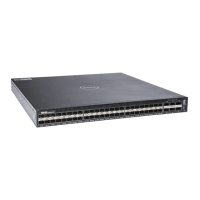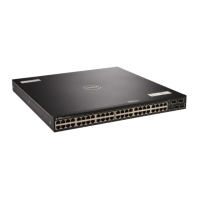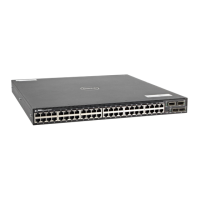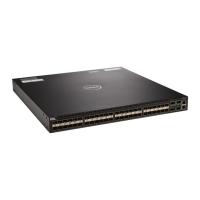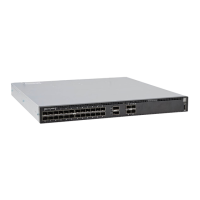Join a Multicast Group
There are two ways that a host may join a multicast group: it may respond to a general query from its querier
or it may send an unsolicited report to its querier.
Responding to an IGMP Query
The following describes how a host can join a multicast group.
1 One router on a subnet is elected as the querier. The querier periodically multicasts (to all-multicast-
systems address 224.0.0.1) a general query to all hosts on the subnet.
2 A host that wants to join a multicast group responds with an IGMP Membership Report that contains the
multicast address of the group it wants to join (the packet is addressed to the same group). If multiple
hosts want to join the same multicast group, only the report from the first host to respond reaches the
querier and the remaining hosts suppress their responses (For how the delay timer mechanism works,
refer to Adjusting Query and Response Timers).
3 The querier receives the report for a group and adds the group to the list of multicast groups associated
with its outgoing port to the subnet. Multicast traffic for the group is then forwarded to that subnet.
Sending an Unsolicited IGMP Report
A host does not have to wait for a general query to join a group. It may send an unsolicited IGMP Membership
Report, also called an IGMP Join message, to the querier.
Leaving a Multicast Group
The following describes how a host can leave a multicast group.
1 A host sends a membership report of type 0x17 (IGMP Leave message) to the all routers multicast
address 224.0.0.2 when it no longer cares about multicast traffic for a particular group.
2 The querier sends a Group-Specific Query to determine whether there are any remaining hosts in the
group. There must be at least one receiver in a group on a subnet for a router to forward multicast traffic
for that group to the subnet.
3 Any remaining hosts respond to the query according to the delay timer mechanism (refer to
Adjusting Query and Response Timers). If no hosts respond (because there are none remaining in the
group), the querier waits a specified period and sends another query. If it still receives no response, the
querier removes the group from the list associated with forwarding port and stops forwarding traffic for
that group to the subnet.
IGMP Version 3
Conceptually, IGMP version 3 behaves the same as version 2. However, there are differences.
• Version 3 adds the ability to filter by multicast source, which helps multicast routing protocols avoid
forwarding traffic to subnets where there are no interested receivers.
• To enable filtering, routers must keep track of more state information, that is, the list of sources that
must be filtered. An additional query type, the Group-and-Source-Specific Query, keeps track of state
changes, while the Group-Specific and General queries still refresh the existing state.
• Reporting is more efficient and robust: hosts do not suppress query responses (non-suppression helps
track state and enables the immediate-leave and IGMP snooping features), state-change reports are
retransmitted to insure delivery, and a single membership report bundles multiple statements from a
single host, rather than sending an individual packet for each statement.
The version 3 packet structure is different from version 2 to accommodate these protocol enhancements.
Queries are still sent to the all-systems address 224.0.0.1, as shown in the following illustration, but reports
Internet Group Management Protocol (IGMP) 427
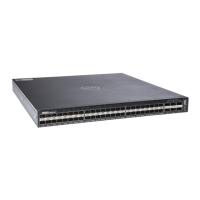
